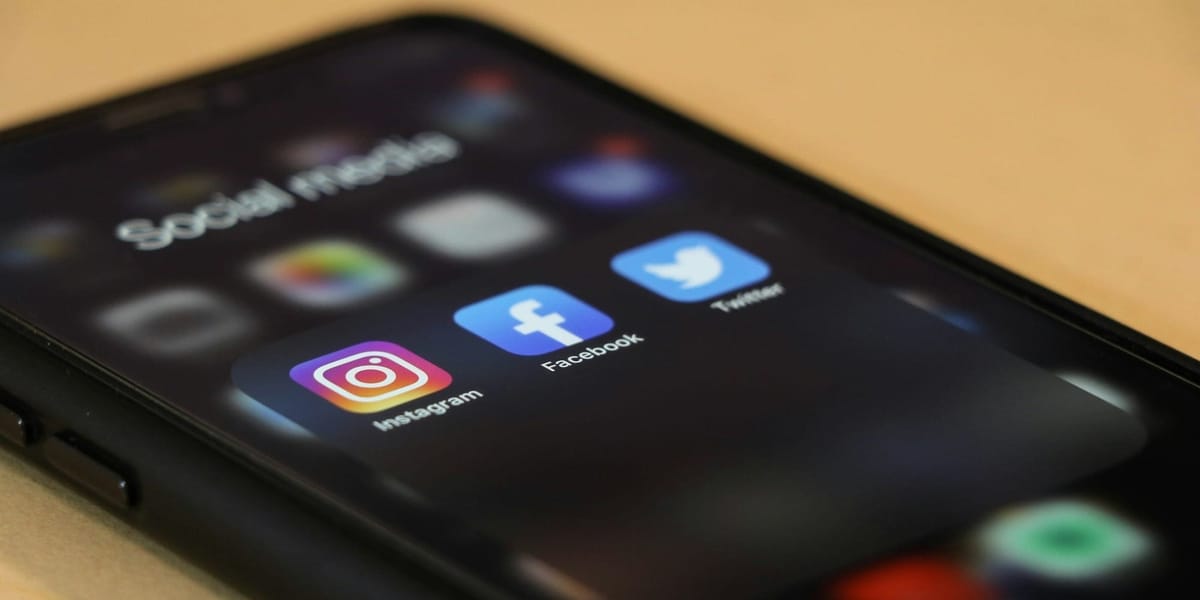Social Media and Therapy: How Digital Life Impacts Mental Health Treatment
Explore how social media impacts mental health and therapy. Learn about digital boundaries, therapeutic challenges, and strategies for healthier social media use in mental health treatment.

In our hyperconnected world, social media significantly influences both mental health challenges and the therapeutic process itself, creating new opportunities and obstacles for healing.
The notification sound chimes, and almost automatically, your hand reaches for your phone. Within seconds, you're scrolling through carefully curated highlight reels of other people's lives, comparing your behind-the-scenes reality to their polished presentations. You see former classmates announcing promotions, friends posting vacation photos, and influencers showcasing seemingly perfect lifestyles. By the time you close the app, you feel worse about your own life, more anxious about your future, and increasingly disconnected from genuine human connection.
This scenario plays out millions of times daily across Canada and around the world. Social media platforms, originally designed to connect us, have become complex psychological landscapes that significantly impact mental health and, consequently, the therapeutic process. For mental health professionals and their clients, understanding these digital influences has become essential for effective treatment and sustainable wellbeing.
The relationship between social media and therapy is multifaceted. These platforms can exacerbate existing mental health conditions, create new psychological challenges, and complicate traditional therapeutic approaches. Simultaneously, they offer unprecedented opportunities for mental health education, community building, and innovative treatment delivery. Navigating this digital terrain requires awareness, intentionality, and often professional guidance to harness the benefits while mitigating the risks.
The Psychology of Social Media
Understanding how social media affects our brains and behavior is crucial for both therapists and clients working to address mental health challenges in the digital age. These platforms are designed using principles of behavioral psychology that make them highly engaging and potentially addictive, triggering reward systems in ways that can interfere with mental health and therapeutic progress.
Dopamine and the reward cycle form the foundation of social media's psychological impact. Each like, comment, share, or notification triggers a small release of dopamine, the neurotransmitter associated with pleasure and reward. This creates what psychologists call a variable ratio reinforcement schedule – the most addictive type of behavioral conditioning. Unlike fixed rewards, the unpredictable nature of social media feedback keeps users constantly checking for the next dopamine hit, creating patterns that can interfere with focus, present-moment awareness, and emotional regulation.
Social comparison theory explains why scrolling through social media often leaves people feeling inadequate or dissatisfied with their own lives. Humans naturally compare themselves to others as a way of evaluating their own position and progress. Social media amplifies this tendency by providing endless opportunities for comparison with carefully curated, often unrealistic portrayals of other people's lives. These comparisons typically occur upward – people compare themselves to those who appear more successful, attractive, or happy – leading to decreased self-esteem and life satisfaction.
Fear of missing out (FOMO) represents a specific anxiety phenomenon intensified by social media use. Constant exposure to others' activities, achievements, and experiences creates persistent worry about missing opportunities or being left behind. This fear drives compulsive checking behaviors and can prevent people from being present in their own lives, always wondering what else might be happening elsewhere.
Attention fragmentation occurs as social media platforms are designed to capture and hold attention through rapid content switching, bright colors, movement, and instant gratification. This constant stimulation can impair the ability to focus deeply on single tasks, engage in reflective thinking, or tolerate boredom – all skills that are essential for therapeutic work and emotional processing.
Parasocial relationships develop when people form one-sided emotional connections with social media personalities, influencers, or even distant acquaintances whose lives they follow closely online. While these relationships can provide some sense of connection, they often substitute for genuine reciprocal relationships and can create unrealistic expectations about real-world interactions.
Common Mental Health Challenges Linked to Social Media
The psychological mechanisms underlying social media use contribute to various mental health challenges that therapists increasingly encounter in their practice. Understanding these patterns helps both professionals and individuals recognize when digital habits might be contributing to psychological distress.
Anxiety disorders often worsen with excessive social media use. The constant stream of information, social comparison opportunities, and pressure to maintain an online presence can heighten general anxiety levels. Specific anxiety symptoms linked to social media include performance anxiety about posting content, social anxiety about online interactions, and generalized worry about missing important information or social connections.
Depression symptoms frequently correlate with heavy social media use, particularly when that use involves passive consumption rather than active engagement. Spending hours scrolling through others' highlight reels while feeling disconnected from one's own life can intensify feelings of hopelessness, worthlessness, and isolation. The superficial nature of many online interactions can also contribute to loneliness despite being constantly "connected" to others.
Body image and eating disorders are significantly impacted by social media, particularly platforms that emphasize visual content. Constant exposure to edited, filtered, and professionally photographed images creates unrealistic beauty standards. The culture of food photography and fitness posting can trigger or worsen eating disorders, body dysmorphia, and exercise addiction. Even body-positive content can become problematic when it creates pressure to maintain certain attitudes or appearances.
Sleep disturbances commonly result from excessive screen time, particularly before bedtime. The blue light emitted by devices interferes with melatonin production, while the stimulating content keeps minds active when they should be winding down. Many people report difficulty falling asleep after scrolling through social media, leading to chronic sleep deprivation that exacerbates other mental health issues.
Attention and concentration difficulties develop as brains adapt to the rapid-fire stimulation of social media feeds. This can manifest as decreased ability to focus on work or study, difficulty engaging in deep conversations, restlessness when not stimulated by technology, and challenges with mindfulness or meditation practices that require sustained attention.
Relationship and intimacy issues arise when social media use interferes with real-world connections. This might include comparing real relationships to idealized online portrayals, difficulty being present with partners or friends due to device distractions, conflicts over social media use, or substituting online interactions for face-to-face intimacy.
Identity and self-esteem challenges emerge as people curate their online personas, sometimes losing touch with their authentic selves. The pressure to present a perfect image can create internal conflict between public personas and private experiences. Additionally, seeking validation through likes and comments can make self-worth dependent on external digital feedback rather than internal values and accomplishments.
How Social Media Affects the Therapeutic Process
The pervasive influence of social media extends into therapy sessions themselves, creating new dynamics that mental health professionals must navigate skillfully. Understanding these impacts helps both therapists and clients work more effectively together in addressing digital-age mental health challenges.
Session focus and attention can be compromised when clients struggle to disconnect from their digital lives during therapy. Many people experience phantom vibrations, anxiety about missing notifications, or intrusive thoughts about social media during sessions. This constant partial attention can prevent the deep focus necessary for therapeutic breakthroughs and emotional processing.
Therapeutic relationship boundaries become more complex in the age of social media. Clients may search for their therapists online, discover personal information through social platforms, or request to connect on social media. These situations require careful navigation to maintain appropriate professional boundaries while addressing clients' natural curiosity and desire for connection.
Between-session processing is influenced by social media consumption, which can either support or undermine therapeutic work. Clients might encounter triggering content that undoes progress made in session, or they might find supportive communities and resources that enhance their healing journey. The quality and type of content consumed between sessions significantly impacts therapeutic momentum.
Reality testing and perspective can be distorted by social media echo chambers and algorithm-driven content that reinforces existing beliefs and moods. Clients struggling with depression might be shown more negative content, while those with anxiety might encounter more fear-inducing information. This digital environment can make it difficult to develop balanced perspectives and challenge unhelpful thought patterns.
Homework and skill practice assignments may compete with social media habits for time and attention. Traditional therapeutic exercises like journaling, mindfulness practice, or behavioral experiments require the same focused attention that social media use erodes. Clients may struggle to engage with therapeutic tools when their attention spans have been shortened by digital consumption patterns.
Progress measurement becomes more complex when social media use influences mood and behavior in ways that may mask or exaggerate therapeutic gains. A client might feel significantly better after a week of reduced social media use, only to experience mood dips when they resume regular platform use, making it difficult to assess the true impact of therapeutic interventions.
Trauma processing can be complicated by social media exposure to triggering content, retraumatization through online harassment or cyberbullying, or difficulty creating the emotional safety necessary for trauma work when constantly connected to potentially triggering digital environments.
Digital Boundaries and Healthy Social Media Use
Developing healthy relationships with social media requires intentional boundary-setting and mindful consumption practices. These strategies can significantly support mental health and enhance therapeutic outcomes when implemented thoughtfully and consistently.
Time boundaries form the foundation of healthy social media use. This involves setting specific limits on daily social media consumption, designated times for checking platforms, and media-free periods during meals, before bed, and upon waking. Many people benefit from using app timers or digital wellness tools to track and limit their usage, though the key is finding sustainable limits that feel manageable rather than restrictive.
Content boundaries involve curating your social media feeds to support rather than undermine your mental health. This means unfollowing accounts that consistently trigger negative feelings, seeking out positive and inspiring content, diversifying your feed to include educational and uplifting material, and being selective about the types of posts you engage with through likes, comments, and shares.
Emotional boundaries help protect your psychological wellbeing while using social media. This includes recognizing when platforms are affecting your mood negatively and taking breaks accordingly, not taking online interactions or lack of engagement personally, avoiding using social media when you're already feeling vulnerable or upset, and remembering that online presentations rarely reflect complete reality.
Privacy boundaries protect both your personal information and your mental space. This involves regularly reviewing and updating privacy settings, being thoughtful about what personal information you share online, limiting location sharing and personal details, and understanding the long-term implications of your digital footprint.
Engagement boundaries focus on how you interact with others online in ways that support healthy relationships. This includes avoiding arguments or controversial discussions on public platforms, choosing direct private communication for sensitive topics, not using social media to address relationship conflicts, and maintaining respect and kindness in online interactions even when you disagree with others.
Notification boundaries reduce the constant interruption and urgency that social media can create in daily life. This involves turning off non-essential notifications, checking social media intentionally rather than responding to every alert, creating phone-free zones in your home and life, and using "do not disturb" settings during important activities like work, meals, and sleep.
Platform boundaries recognize that different social media platforms affect mental health differently and may require different approaches. Some people find that visual platforms like Instagram trigger more body image issues, while Twitter might increase political anxiety. Understanding your personal triggers and adjusting your use of different platforms accordingly can significantly impact your mental health.
Therapist Considerations in the Digital Age
Mental health professionals face unique challenges and opportunities in addressing social media's impact on their clients' wellbeing. Staying current with digital trends while maintaining therapeutic effectiveness requires ongoing education and adaptation of traditional therapeutic approaches.
Assessment and intake processes increasingly need to include questions about social media use, digital habits, and technology's impact on mental health. Understanding how clients interact with technology, what platforms they use, how much time they spend online, and what emotional impacts they experience helps therapists develop more comprehensive treatment plans.
Therapeutic interventions may need to be adapted or supplemented to address digital-age challenges. Traditional cognitive-behavioral therapy techniques can be applied to social media-related thoughts and behaviors, while newer approaches like digital detox strategies, mindful technology use, and social media literacy become increasingly relevant therapeutic tools.
Professional boundaries require careful consideration in the digital age. Therapists must navigate questions about social media presence, client requests for online connections, and the potential for clients to find personal information online. Clear policies and thoughtful discussions about digital boundaries help maintain therapeutic relationships while addressing the realities of online life.
Continuing education becomes essential as therapists must stay informed about emerging social media platforms, digital trends affecting mental health, and research on technology's psychological impacts. Understanding the platforms and digital experiences that clients discuss requires ongoing learning and cultural competency development.
Treatment planning needs to consider how social media use might support or interfere with therapeutic goals. For some clients, reducing social media use might be a primary treatment target, while others might benefit from learning healthier engagement strategies or using digital platforms to access mental health resources and support communities.
Ethical considerations arise around issues like client privacy in digital spaces, appropriate use of technology in therapy, and maintaining competency in addressing digital-age mental health challenges. Professional organizations continue to develop guidelines for navigating these evolving ethical landscapes.
Collaboration with other professionals becomes important as addressing social media-related mental health issues often requires interdisciplinary approaches. This might involve working with educators, parents, physicians, or other mental health professionals to create comprehensive support systems for clients struggling with digital wellness.
The Positive Potential of Social Media in Mental Health
While much focus is placed on social media's negative impacts, these platforms also offer significant opportunities for mental health support, education, and community building when used thoughtfully and intentionally.
Mental health education and awareness flourish on social media platforms, with mental health professionals, organizations, and advocates sharing valuable information about psychological wellbeing, treatment options, and coping strategies. This democratization of mental health information helps reduce stigma and increases mental health literacy across diverse populations.
Support communities and peer connections develop around shared mental health experiences, providing validation, encouragement, and practical advice for people dealing with similar challenges. These communities can be particularly valuable for individuals dealing with rare conditions, those in geographic areas with limited mental health resources, or people seeking connection with others who share their experiences.
Crisis resources and immediate support are increasingly available through social media platforms, with many organizations providing crisis intervention, suicide prevention resources, and immediate support through digital channels. These resources can provide crucial help during mental health emergencies when traditional services may not be immediately available.
Therapy and treatment access has expanded through social media marketing by mental health professionals, online therapy platforms, and mental health apps that help people connect with appropriate care. Social media can help individuals find therapists who specialize in their specific needs and feel comfortable with their identities and backgrounds.
Advocacy and social change efforts use social media to challenge mental health stigma, advocate for policy changes, raise awareness about mental health issues, and amplify voices of people with lived experience. These movements have significantly contributed to increased mental health awareness and reduced discrimination.
Creative expression and healing opportunities abound on social media platforms, where individuals can share their stories, connect through art and creativity, participate in healing communities, and find inspiration for their own recovery journeys. Many people find therapeutic value in sharing their experiences and connecting with others through creative content.
Professional development and connection for mental health professionals happens through social media, where they can share resources, connect with colleagues, participate in professional discussions, and stay current with research and best practices in their fields.
Practical Strategies for Therapists and Clients
Implementing effective strategies for managing social media's impact on mental health requires collaboration between therapists and clients, along with practical tools that can be integrated into daily life and therapeutic work.
Digital wellness assessments should become routine parts of mental health treatment, helping clients identify problematic patterns, understand the connection between their digital habits and mental health symptoms, and establish baseline measurements for tracking progress. These assessments can include questions about time spent on various platforms, emotional responses to social media use, and specific triggers or problematic behaviors.
Mindful usage practices can transform social media from a mindless habit into an intentional activity. This includes checking in with yourself before opening social media apps, setting specific intentions for each session, paying attention to emotional responses during use, and practicing gratitude for positive connections while recognizing and addressing negative impacts.
Alternative activity development helps clients replace excessive social media use with activities that genuinely support mental health and personal growth. This might include developing offline hobbies, strengthening face-to-face relationships, engaging in physical activity, pursuing creative interests, or practicing mindfulness and meditation.
Cognitive restructuring techniques can address the thought patterns that social media often reinforces. This includes challenging social comparison thoughts, questioning the reality of online presentations, developing more balanced perspectives about success and happiness, and practicing self-compassion when experiencing FOMO or inadequacy.
Behavioral experiments allow clients to test their assumptions about social media use and its impact on their wellbeing. This might involve taking breaks from specific platforms, changing usage patterns, or engaging differently with content to observe the effects on mood, anxiety, productivity, and relationships.
Support system strengthening focuses on developing real-world connections and relationships that provide genuine support and intimacy. This includes prioritizing face-to-face interactions, developing communication skills for deeper relationships, creating accountability partnerships for digital wellness goals, and building communities around shared interests and values.
Technology tools and apps can support healthier social media use when chosen thoughtfully. This includes screen time tracking apps, meditation and mindfulness apps, digital wellness tools, and apps designed to promote positive social connections rather than passive consumption.
Creating Sustainable Digital Wellness
Long-term success in managing social media's impact on mental health requires developing sustainable practices that can adapt to changing technology and life circumstances while consistently supporting psychological wellbeing.
Personal values clarification helps individuals make decisions about social media use based on what matters most to them rather than external pressures or FOMO. This involves identifying core values, assessing whether current digital habits align with these values, and making intentional choices about technology use that support personal goals and wellbeing.
Regular digital detox practices provide ongoing opportunities to reset relationships with technology and reconnect with offline life. This might include daily tech-free periods, weekly digital sabbaths, monthly longer breaks from social media, or periodic comprehensive digital detoxes that allow for reflection and recalibration.
Continuous education and awareness help individuals stay informed about social media's psychological impacts and develop skills for navigating new platforms and features as they emerge. This includes staying current with research on technology and mental health, learning about privacy and digital safety, and developing media literacy skills.
Professional support integration ensures that digital wellness becomes a regular part of mental health care rather than an afterthought. This involves discussing social media use regularly in therapy, addressing digital-related triggers and challenges as they arise, and integrating digital wellness strategies into comprehensive treatment plans.
Community and accountability provide ongoing support for maintaining healthy digital habits. This might include joining digital wellness groups, creating accountability partnerships with friends or family members, participating in communities focused on mindful technology use, or working with mental health professionals who understand digital wellness.
Flexibility and adaptation allow digital wellness practices to evolve as technology changes and life circumstances shift. This includes regularly reassessing digital habits and their impacts, adjusting strategies as needed, staying open to new approaches and tools, and recognizing that digital wellness is an ongoing process rather than a destination.
The goal is not to eliminate social media entirely but to develop a conscious, intentional relationship with these powerful tools that supports rather than undermines mental health and therapeutic progress. This requires ongoing attention, professional guidance when needed, and a commitment to prioritizing genuine wellbeing over digital validation.
If you're struggling with social media's impact on your mental health, or if digital habits are interfering with your relationships and wellbeing, professional support can provide valuable guidance and tools. At Theralist, we connect you with experienced mental health professionals who understand the complexities of digital-age mental health challenges and can help you develop healthier relationships with technology while supporting your overall psychological wellbeing.





